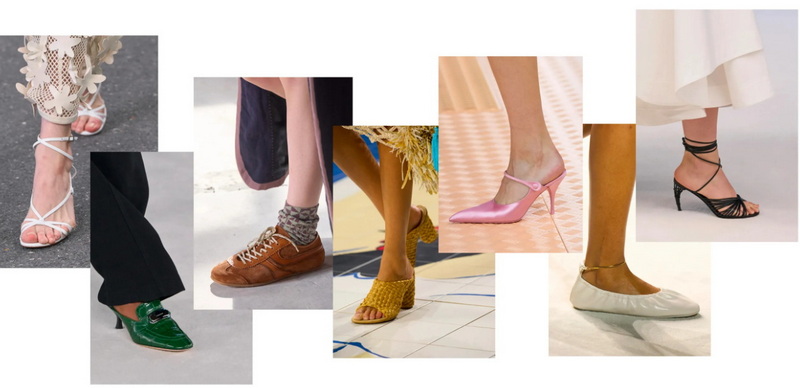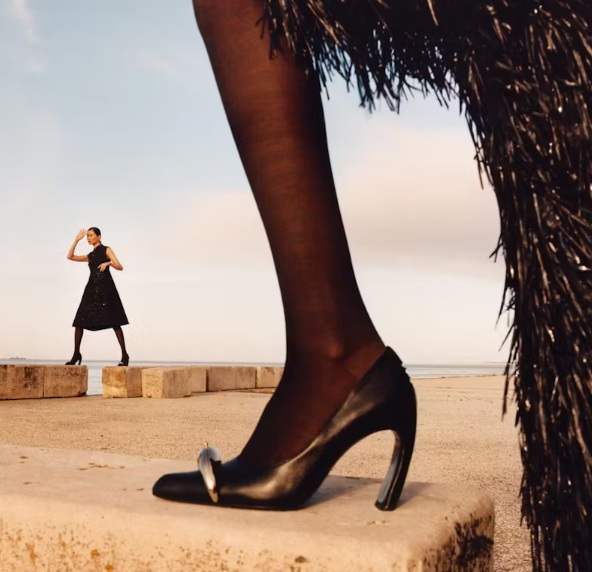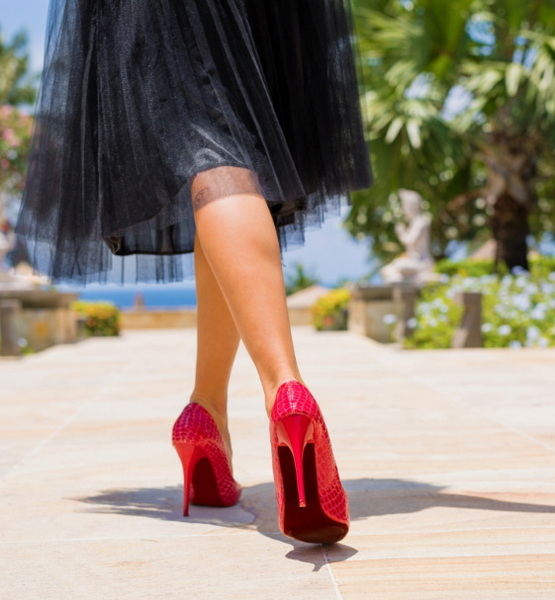Content Menu
● The Ancient Origins of Elevated Footwear
● The Practical Beginnings in Persia
● The Transition to European Fashion
● The Rise of Women's Heels
● The 17th and 18th Centuries: Heels as Status Symbols
● The Gender Shift in Heel-Wearing
● The 19th Century: Heels and Femininity
● The 20th Century: Heels as a Symbol of Female Empowerment
● The Evolution of Heel Designs
● The Psychology Behind High Heels
● Cultural Significance and Controversy
● Modern Trends and Innovations
● Conclusion
● FAQ
>> 1. When were high heels first invented?
>> 2. Why did men stop wearing high heels?
>> 3. Are high heels bad for your health?
>> 4. What is the ideal heel height for everyday wear?
>> 5. How have high heels impacted women's empowerment?
● Citations:
High heels have been a staple in women's fashion for centuries, but their origins and purpose have evolved significantly over time. This article delves into the fascinating history of high heels, exploring their invention, evolution, and the reasons behind their popularity among women.

The Ancient Origins of Elevated Footwear
The concept of elevated footwear dates back to ancient civilizations. In Egypt, as early as 3500 BCE, both men and women wore heeled sandals for ceremonial purposes[1]. These early forms of elevated shoes were not designed specifically for women but served as status symbols for the upper class.
The Practical Beginnings in Persia
The true precursor to modern high heels emerged in Persia around the 9th century. Surprisingly, these heels were initially designed for men, specifically Persian cavalrymen[3]. The heeled boots served a practical purpose: they helped secure the riders' feet in stirrups while riding horses, providing better stability and control.
The Transition to European Fashion
As trade and cultural exchange increased between Persia and Europe, the concept of heeled shoes made its way westward. In the 16th century, European aristocracy, both men and women, began adopting heeled shoes as a symbol of status and wealth[1].
The Rise of Women's Heels
The shift towards high heels becoming predominantly associated with women's fashion occurred gradually. Catherine de Medici, the wife of Henry II of France, is often credited with popularizing high heels among women in the European courts during the 16th century[1]. She reportedly wore heels to increase her stature and exude more authority.
The 17th and 18th Centuries: Heels as Status Symbols
During this period, high heels became increasingly associated with nobility and wealth. King Louis XIV of France, known for his extravagant fashion sense, popularized red-heeled shoes among the aristocracy[1]. This trend spread to women's fashion as well, with heels becoming a symbol of social status and refinement.
The Gender Shift in Heel-Wearing
By the 18th century, a significant shift occurred in the perception of high heels. Men's fashion began to favor more practical, flat-soled shoes, while women continued to wear heels[8]. This change coincided with the Enlightenment era, which emphasized rationality and practicality in men's attire.
The 19th Century: Heels and Femininity
As the 19th century progressed, high heels became firmly established as a feminine fashion accessory. Victorian-era women often wore heeled boots, which were considered both fashionable and modest[6]. The association between high heels and femininity grew stronger during this period.
The 20th Century: Heels as a Symbol of Female Empowerment
The 20th century saw significant changes in women's roles in society, and high heels evolved alongside these changes. In the 1920s, as women gained more independence, shorter hemlines allowed for more visible and elaborate shoe designs[6].

The Evolution of Heel Designs
Throughout the 20th century, heel designs underwent numerous transformations:
1. 1940s-1950s: The invention of the stiletto heel revolutionized women's footwear[1].
2. 1960s-1970s: Platform shoes and chunky heels gained popularity.
3. 1980s: The power suit era brought back sleek, high stilettos as a symbol of female empowerment in the workplace.
The Psychology Behind High Heels
Modern research has explored the psychological and physiological effects of wearing high heels. A study published in Frontiers in Psychology suggests that high heels influence women's attractiveness by affecting their lumbar curvature[7]. This finding provides an evolutionary perspective on the appeal of high heels.
Cultural Significance and Controversy
While high heels remain a popular fashion choice for many women, they have also been the subject of debate and controversy. Some view them as symbols of female empowerment and self-expression, while others criticize them for potentially causing health issues and reinforcing unrealistic beauty standards[8].
Modern Trends and Innovations
Today, high heel designs continue to evolve, with a focus on combining style with comfort. Designers like Mary Alice Malone prioritize wearability without compromising elegance[10]. The fashion industry is also exploring more inclusive sizing and styles to cater to diverse preferences and needs.
Conclusion
The invention and evolution of high heels for women is a complex story that spans centuries and cultures. From their practical origins in Persian horse-riding to their status as a symbol of femininity and fashion, high heels have played various roles in society. Today, they continue to be a significant part of women's fashion, evolving to meet changing tastes, needs, and cultural attitudes.

FAQ
1. When were high heels first invented?
High heels trace their origins back to ancient Egypt around 3500 BCE, but the modern concept of high heels emerged in Persia around the 9th century for horseback riding[1][3].
2. Why did men stop wearing high heels?
Men gradually stopped wearing high heels during the Enlightenment era of the 18th century, as fashion trends shifted towards more practical and rational styles for men[8].
3. Are high heels bad for your health?
While high heels can cause foot pain and posture issues if worn excessively, moderate use and proper fit can minimize health risks. It's important to balance style with comfort and foot health[8].
4. What is the ideal heel height for everyday wear?
The ideal heel height varies by individual, but many experts suggest a 2-3 inch (5-7.5 cm) heel for everyday wear, as it provides elevation without excessive strain on the feet and legs[10].
5. How have high heels impacted women's empowerment?
High heels have played a complex role in women's empowerment, serving as both a symbol of feminine power in professional settings and a subject of criticism for potentially reinforcing unrealistic beauty standards[8].
Citations:
[1] https://www.thefactshop.com/fashion-facts/history-of-high-heels/
[2] https://londonrunway.co.uk/the-history-of-high-heels/
[3] https://shoefairyofficial.com/blogs/news/the-history-of-high-heels-10-facts-that-surprise-you
[4] https://unsplash.com/s/photos/heels
[5] https://www.youtube.com/watch?v=_7Q26Jv4_Ww
[6] https://www.harpersbazaar.com/fashion/street-style/g7690/high-heels-through-the-years/
[7] https://www.frontiersin.org/journals/psychology/articles/10.3389/fpsyg.2017.01875/full
[8] https://www.fastcompany.com/90775177/the-long-history-of-heels-from-a-symbol-of-mens-power-to-womens-burden
[9] https://unsplash.com/s/photos/high-heels
[10] https://www.malonesouliers.us/blogs/explore/the-invention-of-high-heels?shpxid=0bbf9cd5-541d-4ac1-af66-b892afe5b0a3

















